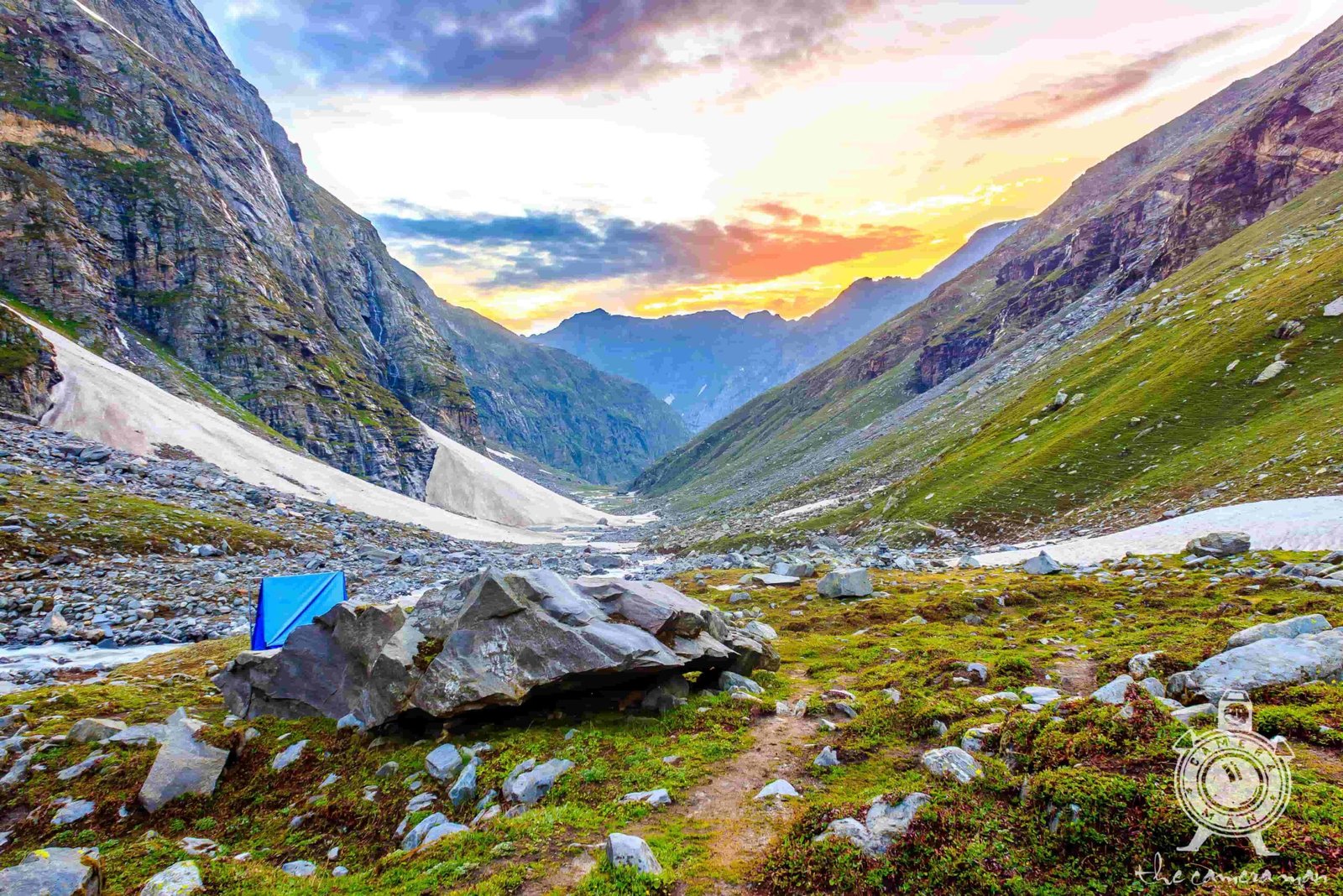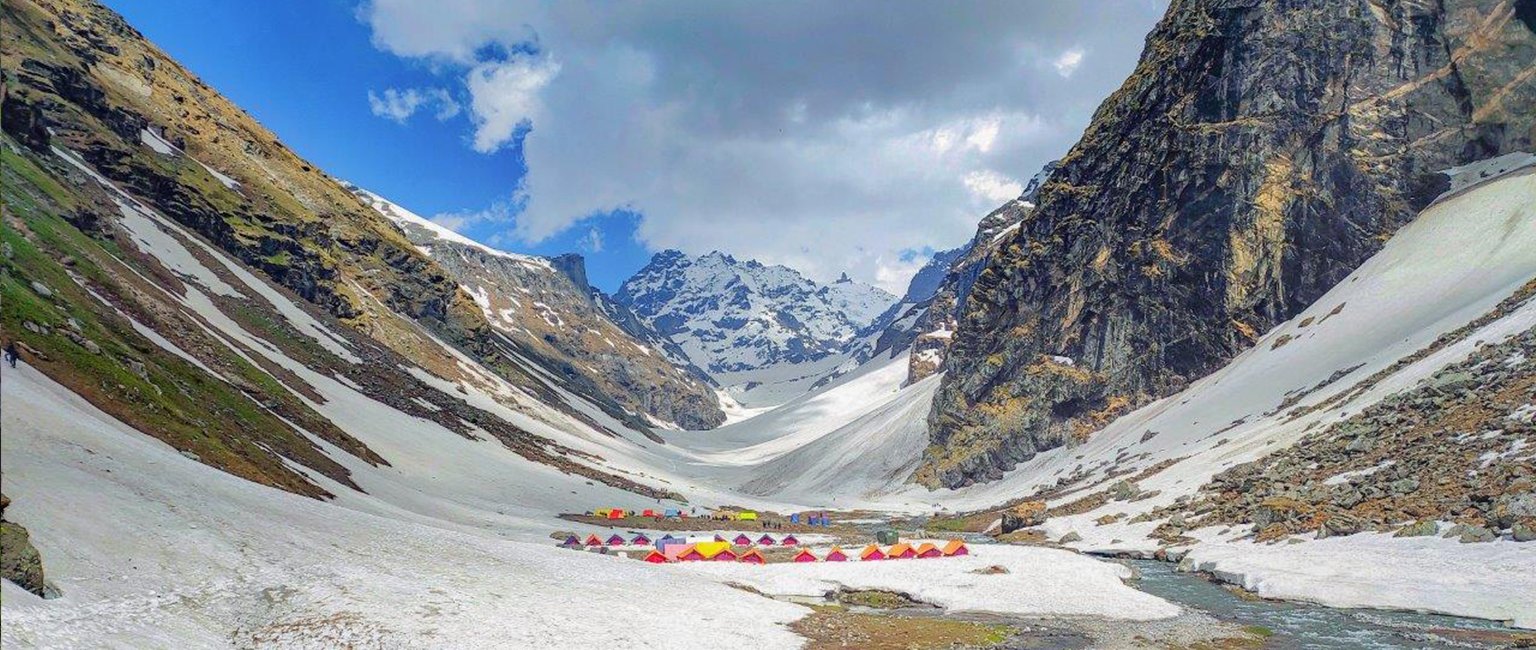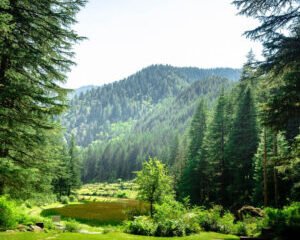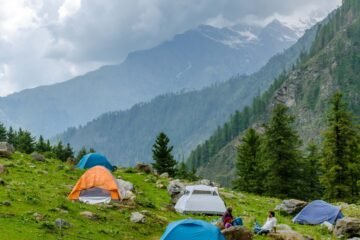The Hampta Pass trek
The Hampta Pass trek is a captivating and diverse adventure nestled in the heart of the Indian Himalayas. This approximately 35-kilometer trek connects the lush Kullu Valley to the arid landscapes of the Lahaul-Spiti Valley. Renowned for its scenic beauty and varying terrains, the trek offers an unforgettable journey through a spectrum of natural landscapes.
**Starting Point: Manali**
The journey typically begins in Manali, a popular hill station in Himachal Pradesh. Trekkers prepare for the expedition, ensuring they have all the necessary gear and supplies. The excitement builds as they embark on a drive to the base camp near Jobra, the starting point of the trek.
**Phases of the Hampta Pass Trek:**
1. **Jobra to Jwara**:
The trek kicks off with a moderate hike from Jobra to Jwara. The path is adorned with pine forests and captivating views of the Rani Nallah. Crossing wooden bridges and meandering through quaint villages, trekkers experience the local way of life.
2. **Jwara to Balu Ka Ghera**:
The landscape transforms as trekkers advance towards Balu Ka Ghera. The lush greenery gives way to a barren terrain surrounded by towering mountains. This section offers a dramatic change in scenery, a prelude to the high-altitude landscapes ahead.
3. **Balu Ka Ghera to Shea Goru via Hampta Pass**:
The highlight of the trek is crossing the Hampta Pass at an altitude of approximately 4,270 meters. This challenging climb rewards trekkers with panoramic views of snow-capped peaks and sprawling valleys. The feeling of accomplishment at the pass is unmatched. Descending into the Lahaul Valley, trekkers encounter vast open spaces and glaciers, a stark contrast to the forested valleys they left behind.
4. **Shea Goru to Chhatru and Chandratal**:
The descent continues as trekkers head towards Chhatru, a small village at the crossroads of various valleys. From here, an optional excursion to Chandratal, the “Moon Lake,” can be undertaken. The pristine lake surrounded by high mountains is a sight to behold.
5. **Chhatru to Manali**:
The final leg of the trek involves a drive from Chhatru back to Manali. The journey culminates with a sense of accomplishment and a collection of memories etched into the minds of trekkers.
**Diverse Landscapes and Natural Wonders:**
The Hampta Pass trek stands out for its diverse landscapes. From dense forests to rocky terrains, from lush meadows to icy glaciers, each phase of the trek offers a unique experience. Trekkers traverse through gushing streams, negotiate boulder-strewn paths, and witness the gradual change in vegetation and climate.
**Cultural Encounters:**
The trek also offers glimpses into the local way of life. Trekkers interact with shepherds and villagers, gaining insights into their traditions and daily routines. The region’s unique culture, influenced by the surrounding mountains, is a testament to the human spirit’s resilience.
**Best Time to Trek:**
The ideal time for the Hampta Pass trek is during the summer months of June to September. The weather is relatively mild, and the landscapes are in full bloom. However, trekkers must remain prepared for sudden changes in weather and be equipped with suitable clothing and gear.
**Conclusion:**
The Hampta Pass trek is a journey of contrasts, where the lush and the barren, the high and the low, come together to create an unforgettable experience. It’s not just a physical journey; it’s a journey of self-discovery, resilience, and a deep connection with nature. Whether you’re a seasoned trekker or a beginner, the Hampta Pass trek promises adventure, beauty, and a profound sense of accomplishment.
Manali to Jobra (Drive and Trek)
– The trek begins from Jobra. The trail is relatively easy and gradually ascends through lush forests.
– Reach Chika, a beautiful campsite surrounded by towering mountains.
– Set up camp, relax, and acclimatize to the altitude.
Chika to Balu Ka Gera**
– Begin the day’s trek towards Balu Ka Gera after an early breakfast.
– The trail involves a steady ascent, crossing several small streams.
– Marvel at the changing landscape as you leave the tree line behind and enter an alpine meadow.
– Arrive at Balu Ka Gera, a vast plain with the Hampta River flowing through it. Set up camp here.
Balu Ka Gera to Hampta Pass and Shea Goru
– Today’s trek is relatively challenging as you’ll be crossing the Hampta Pass.
– Start early in the morning to take advantage of clear weather and better snow conditions.
– Ascend gradually to the pass, which offers panoramic views of the surrounding peaks and valleys.
– Descend carefully on the other side of the pass to reach Shea Goru, a beautiful campsite surrounded by snow-capped mountains.
Shea Goru to Chatru and Chandratal Lake**
– Begin the day’s trek towards Chatru, which is a mix of descending and walking through rocky terrain.
– Reach Chatru, a meeting point of roads coming from Rohtang Pass, Hampta Pass, and Spiti.
– From Chatru, drive to Chandratal Lake (approx. 2-3 hours) through picturesque landscapes.
– Spend time by the stunning Chandratal Lake, surrounded by high mountains and pristine beauty.
– Camp near Chandratal Lake and enjoy a peaceful evening.
** Chandratal Lake to Manali (Drive)**
– Wake up early to witness the sunrise over Chandratal Lake and take in the breathtaking views.
– After breakfast, start the drive back to Manali (approx. 7-8 hours).
– Reach Manali by evening, completing your adventurous trek.
Please note that this itinerary is a general guideline and can be subject to changes based on weather conditions, group pace, and the trekking company’s preferences. It’s important to be prepared for varying weather conditions and to acclimatize properly to avoid altitude sickness. Make sure to consult with local trek organizers or guides before embarking on the trek and follow their recommendations.
Certainly, here’s a list of essential items to carry for a Hampta Pass trek. Keep in mind that the specific items you need might vary based on the time of year, weather conditions, and personal preferences. Always do thorough research and adjust your packing list accordingly.
1. **Backpack**: A comfortable and sturdy backpack to carry all your essentials. Make sure it has enough capacity to hold your gear without being overly heavy.
2. **Clothing**:
– **Moisture-Wicking Base Layers**: Lightweight and breathable shirts and pants to keep you dry and comfortable during the trek.
– **Insulating Layers**: A fleece jacket or down sweater to provide warmth in cold conditions.
– **Outer Shell Jacket**: A waterproof and windproof jacket to protect you from rain and chilly winds.
– **Trekking Pants**: Quick-drying and durable pants that allow freedom of movement.
– **Undergarments and Socks**: Carry extra moisture-wicking socks and underwear.
3. **Footwear**:
– **Hiking Boots**: Sturdy and comfortable hiking boots with ankle support to navigate different terrains.
– **Camp Shoes/Sandals**: Lightweight footwear to give your feet a break at the campsite.
4. **Sleeping Gear**:
– **Sleeping Bag**: A warm and compact sleeping bag suitable for the expected temperatures.
– **Sleeping Pad**: An insulated sleeping pad to provide cushioning and insulation from the cold ground.
5. **Trekking Gear**:
– **Trekking Poles**: Help reduce strain on your knees and provide balance while trekking.
– **Headlamp/Flashlight**: Essential for navigating at night and inside tents.
– **Sunglasses and Sunscreen**: Protect yourself from the sun’s strong rays at higher altitudes.
6. **Personal Items**:
– **Identification and Permits**: Carry any required identification documents and trekking permits.
– **Cash and Wallet**: Keep some local currency for emergencies and small purchases.
– **Mobile Phone and Power Bank**: Stay connected and ensure you have a way to charge your devices.
7. **Hydration and Nutrition**:
– **Water Bottles**: Carry reusable water bottles or a hydration system to stay hydrated.
– **Energy Snacks**: Pack energy bars, nuts, dried fruits, and other lightweight snacks.
– **Reusable Cutlery**: Reduce waste by carrying a set of utensils for eating.
8. **Miscellaneous**:
– **First Aid Kit**: Include basic medications, adhesive bandages, antiseptic cream, and any personal prescriptions.
– **Toiletries**: Toilet paper, biodegradable soap, hand sanitizer, and a small towel.
– **Map and Compass/GPS**: Navigation tools to ensure you stay on the right path.
– **Camera**: Capture the breathtaking landscapes and memories along the trek.
Remember that packing light while ensuring you have the essentials is crucial for a trek like Hampta Pass. Make sure to also consider the weather conditions and any specific recommendations from your trek organizers or experienced trekkers who have done the Hampta Pass trek before.






Tour Reviews
“Hampta Pass by KPL Expeditions was an exhilarating experience. The trek was well-paced, and the guides were patient and encouraging. I would have given five stars, but communication before the trek could have been better.”
★★★★★
“KPL Expeditions orchestrated a fantastic trek to Hampta Pass. Their attention to detail and support throughout the journey were commendable. I felt safe, inspired, and deeply connected to nature.”
Thanks
“A truly exceptional trek with KPL Expeditions! The Hampta Pass route was spellbinding, and the team’s professionalism was evident in every aspect. I felt like I was in capable hands throughout.”
“Traversing the Hampta Pass with KPL Expeditions was a delight. The guides were knowledgeable and safety-conscious. The trek was a perfect blend of adventure and natural beauty. A star deducted for minor accommodation hiccups.”
“An unforgettable journey! KPL Expeditions made the Hampta Pass trek a seamless experience. The breathtaking landscapes and well-organized itinerary left me in awe. Kudos to the team for their expertise and hospitality.”
Leave a Review